Introduction to Upper Dolpo
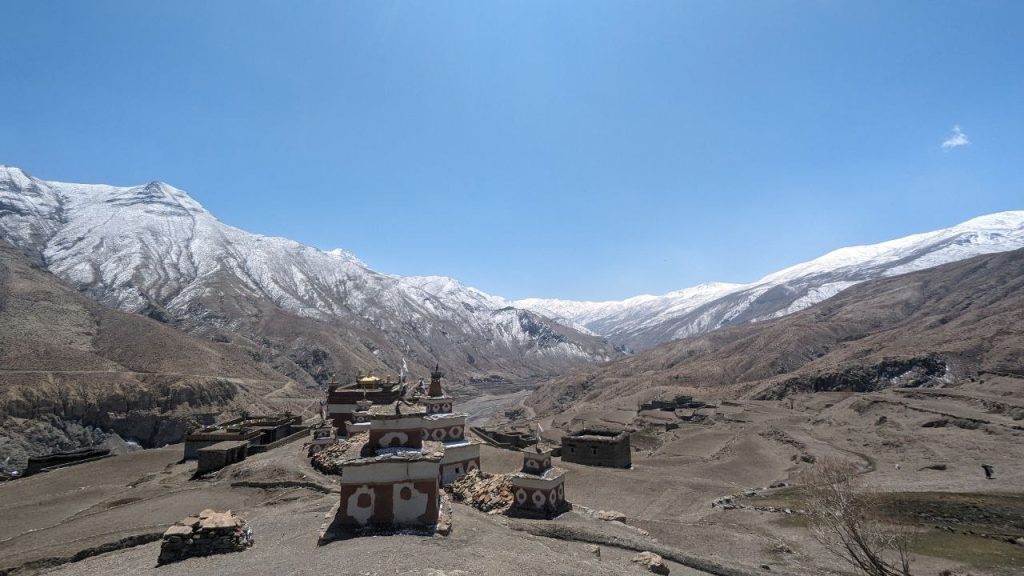
As you embark on this incredible journey, you’ll traverse high mountain passes, wander through ancient Tibetan-influenced villages, and witness the stark beauty of the Dolpo region. The Upper Dolpo Three Passes Trek is renowned for its challenging terrain and high altitudes, making it a perfect choice for seasoned trekkers looking for an off-the-beaten-path adventure. The pristine landscapes, turquoise lakes, and centuries-old monasteries you’ll encounter along the way are just a few highlights of this extraordinary trek.
Dolpo
Dolpo, often referred to as the “hidden valley,” remains one of the least explored areas in Nepal. This trek offers a unique opportunity to explore a region where ancient Bon and Tibetan Buddhist cultures coexist harmoniously. The isolation of Upper Dolpo has preserved its rich cultural heritage, providing trekkers with an authentic and immersive experience. You’ll encounter locals who still practice traditional lifestyles, including salt trade with Tibet and yak herding.
One of the standout features of the Upper Dolpo Trek is its remoteness. Unlike the popular Everest or Annapurna circuits, Upper Dolpo sees far fewer trekkers, allowing for a truly immersive experience in nature. The serene environment, coupled with the absence of modern distractions, makes it an ideal trek for those looking to disconnect and find peace in the wilderness.
Why Upper Dolpo Trek?
The Upper Dolpo Trek is a journey unlike any other, offering a unique blend of adventure, culture, and natural beauty. Here are some compelling reasons why you should consider this trek:
Remote and Unspoiled Beauty
Upper Dolpo is one of the most remote regions in Nepal, characterized by its stark, unspoiled landscapes. The trek takes you through vast, rugged terrain, from arid deserts to lush valleys, and over high mountain passes. The pristine environment, untouched by modern development, allows you to experience nature at its purest.
Cultural Immersion
Dolpo is home to ancient Tibetan Buddhist and Bon traditions. The isolation of the region has preserved these cultures, offering a rare opportunity to witness traditional lifestyles that have remained unchanged for centuries. The trek takes you through villages like Dho Tarap and Saldang, where you can interact with locals, visit monasteries, and learn about their unique way of life.
Unique Wildlife
The region is rich in biodiversity, and if you’re lucky, you might spot rare wildlife such as the snow leopard, blue sheep, and Himalayan marmot. The trek passes through Shey Phoksundo National Park, which is home to various flora and fauna unique to this part of the world.
Challenging Adventure
The Upper Dolpo Three Passes Trek is not for the faint-hearted. It involves crossing high passes such as Jyanta La, Shey La, and Kang La, each over 5,000 meters. The challenging terrain and high altitudes make this trek a true test of endurance and determination, perfect for seasoned trekkers seeking an exhilarating adventure.
Phoksundo Lake
One of the highlights of the trek is the stunning Phoksundo Lake, known for its crystal-clear turquoise waters. The lake, surrounded by snow-capped peaks, is considered one of the most beautiful and tranquil spots in Nepal. The trail around the lake offers breathtaking views and an unforgettable experience.
Preparation for Upper Dolpo Trek
Embarking on the Upper Dolpo Trek requires meticulous preparation. This section will guide you through the essentials to ensure you are well-equipped for this challenging and rewarding adventure.
Physical Fitness and Training for Upper Dolpo trek
The Upper Dolpo Trek is a strenuous journey that demands excellent physical fitness. You will be trekking at high altitudes and crossing multiple passes, some over 5,000 meters. To prepare:
Cardiovascular Training: Engage in activities like running, cycling, and swimming to build stamina.
Strength Training: Focus on exercises that strengthen your legs, core, and back. Squats, lunges, and planks are beneficial.
Hiking Practice: If possible, go on hikes with a loaded backpack to simulate trek conditions. Gradually increase the distance and difficulty.
Altitude Training: If accessible, spend time at higher altitudes to acclimate your body to the reduced oxygen levels.
Permits and Documentation
Trekking in Upper Dolpo requires special permits due to its remote location and conservation status. Ensure you obtain the following:
- Restricted Area Permit: This is mandatory for Upper Dolpo.
- Shey Phoksundo National Park Entry Permit: Required to enter the national park.
- TIMS (Trekkers’ Information Management System) Card: This ensures your safety and record-keeping.
Gear and Equipment
Proper gear is crucial for a safe and comfortable trek. Here’s a checklist of essentials:
- Clothing: Layered clothing is key. Include moisture-wicking base layers, insulating mid-layers, and waterproof outer layers. Don’t forget warm hats, gloves, and socks.
- Footwear: High-quality, broken-in hiking boots are a must. Bring gaiters for snow and mud, and comfortable camp shoes.
- Backpack: A sturdy, well-fitted backpack with a rain cover. Pack light but ensure you have all essentials.
Sleeping Gear: A warm sleeping bag (rated for -20°C) and a sleeping pad for insulation. - Navigation and Communication: A map, compass, and GPS device. A satellite phone or walkie-talkie can be vital in remote areas.
- First Aid and Medications: A comprehensive first aid kit, personal medications, and altitude sickness medication.
- Miscellaneous: Trekking poles, headlamp with extra batteries, reusable water bottle, water purification tablets, and high-energy snacks.
Acclimatization and Health Precautions
Proper acclimatization is critical to prevent Acute Mountain Sickness (AMS). Follow these guidelines:
- Gradual Ascent: Follow the itinerary closely, allowing for acclimatization days.
- Hydration: Drink plenty of water to stay hydrated.
- Diet: Eat a balanced diet, focusing on carbohydrates for energy.
- Avoid Alcohol and Smoking: These can exacerbate altitude sickness.
- Listen to Your Body: If you experience symptoms of AMS, descend immediately and seek medical attention.
Trekking with a Guide and Porter
While it’s possible to trek independently, hiring a guide and porter is highly recommended for the Upper Dolpo Trek:
- Guide: A licensed guide can navigate the challenging terrain, manage permits, and provide valuable insights into local culture and customs.
- Porter: Hiring a porter can ease your load, allowing you to enjoy the trek without the physical strain of carrying heavy gear.
Short Itinerary of Upper Dolpo Trek
Most traditional itineraries for the Upper Dolpo Trek are designed in a clockwise direction. This typically means that trekkers face the most challenging aspects of the trek earlier on, including higher altitudes and steeper ascents. My counterclockwise itinerary, however, allows trekkers to approach the toughest sections after gradually acclimatizing and adjusting to the high-altitude conditions.
- Easier Acclimatization
Starting with lower altitudes and gradually ascending helps your body adjust. By the time you face high-altitude passes like Kang La (5,346 meters) and Shey La (5,115 meters), you’ll be better prepared. - Phoksundo Lake as the Finale
Placing Phoksundo Lake at the trek’s end provides a stunning reward. After navigating challenging terrains, arriving at this pristine lake feels like the perfect climax to your adventure. - Balanced Trekking
The route includes strategic rest days in places like Dho Tarap and Saldang, allowing you to recover and adapt. The gradual ascent from lower to higher altitudes ensures a smoother trek. - Rich Experiences
The counterclockwise route offers vibrant cultural interactions in villages like Namdo and Saldang, alongside breathtaking scenery, including the serene Phoksundo Lake.
Itinerary for Upper Dolpo Trek
- Day 1 – kathmandu to Nepalgunj
- Day 2 – Nepalgunj to Juphal and Trek to Dunai
- Day 3 – Dunai to Lhawanbagar
- Day 4 – Lhawanbagar to Lhasigap
- Day 5 – Lhasigap to Nawarpani
- Day 6 – Nawarpani to Dho Tarap
- Day 7 – Acclimatization and Explore Dho Tarap and Hike to Takshi
- Day 8 – Takshi to Namdo via Jyanta La Pass
- Day 9 – Namdo to Saldang
- Day 10 – Acclimatization and Rest Day at Saldang
- Day 11 – Saldang to Shey Gompa via Shey La Pass
- Day 12 – Rest at Shey Gompa
- Day 13 – Shey Gompa to Phoksundo Khola via Kang La Pass
- Day 14 – Phoksundo Khola to Ringmo
- Day 15 – Exploration in Ringmo and Phoksundo Lake
- Day 16 – Ringmo to Chhekpa
- Day 17 – Chhekpa to Juphal
- Day 18 – Juphal to Nepalgunj to Kathmandu
Highlights of Upper Dolpo Trek
The Upper Dolpo Trek is a journey through one of Nepal’s most remote and culturally rich regions. Here are the key highlights that make this trek a truly unforgettable experience:
Dho Tarap: The Highest Settlement
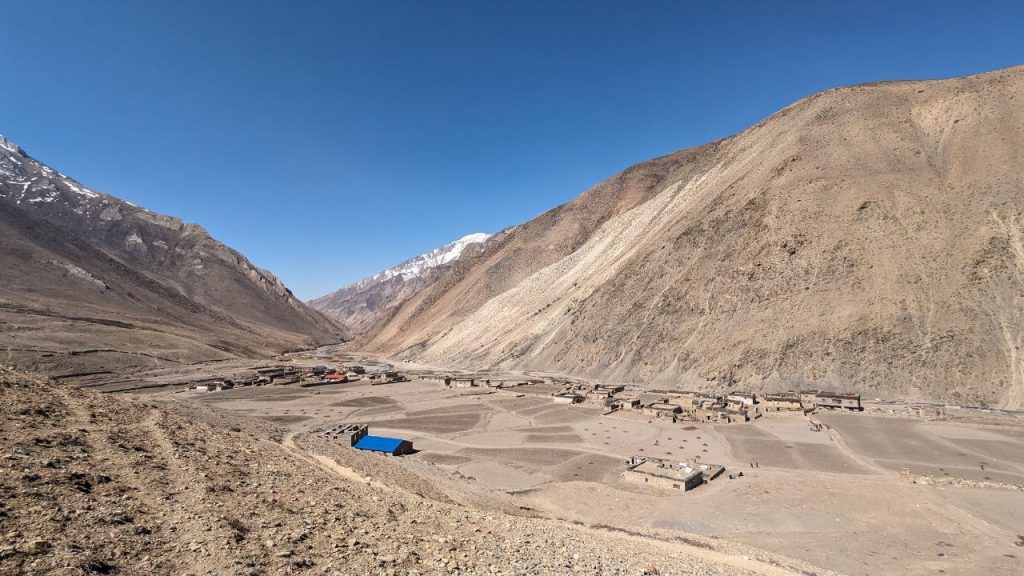
At 4,090 meters (13,415 feet), Dho Tarap is one of the highest settlements in the world. This remote village offers a unique glimpse into traditional Dolpo life. The area is influenced by Tibetan Buddhism and Bonpo practices, which are evident in the local monasteries and festivals. The stark, barren landscapes juxtaposed with the vibrant culture make Dho Tarap a fascinating destination.
Shey Gompa: Spiritual Sanctuary
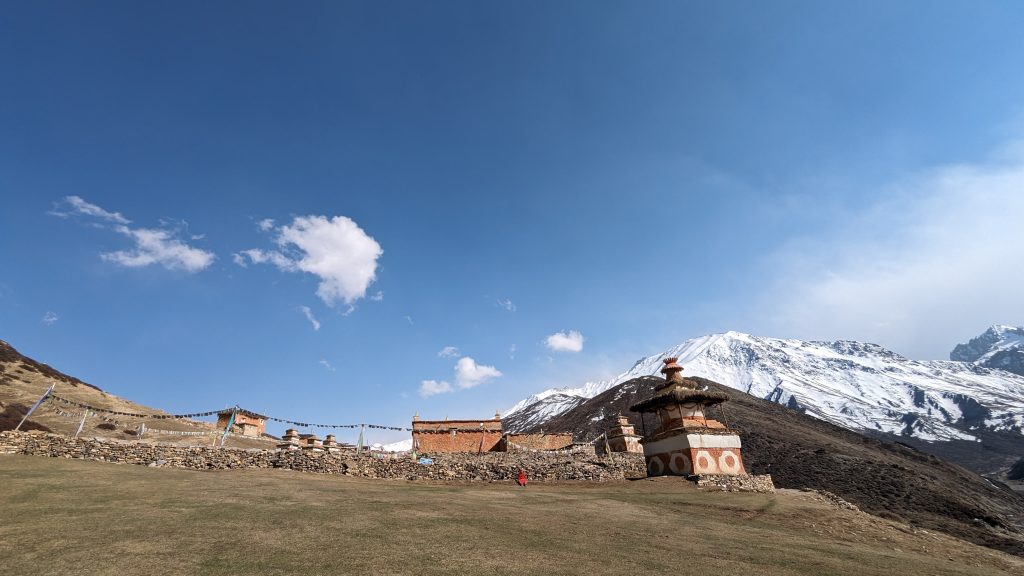
Shey Gompa, located at 4,255 meters (13,960 feet), is a significant spiritual and cultural site. The monastery, set against the backdrop of the Crystal Mountain, is a center for Tibetan Buddhism in Dolpo. The Shey La Pass, at 5,115 meters (16,780 feet), offers panoramic views of the surrounding peaks, adding to the spiritual experience of visiting Shey Gompa. The serene environment and ancient monasteries provide a perfect setting for reflection and relaxation.
Phoksundo Lake: A Pristine Gem
Phoksundo Lake, situated at 3,610 meters (11,847 feet), is renowned for its stunning turquoise waters and spectacular natural setting. The lake’s unique Y-shape and the surrounding snow-capped peaks create a breathtaking vista. This is the highlight of the trek, where you can fully immerse yourself in the tranquil beauty of one of Nepal’s most picturesque lakes. The clear waters, reflected mountains, and untouched environment make it a must-see destination.
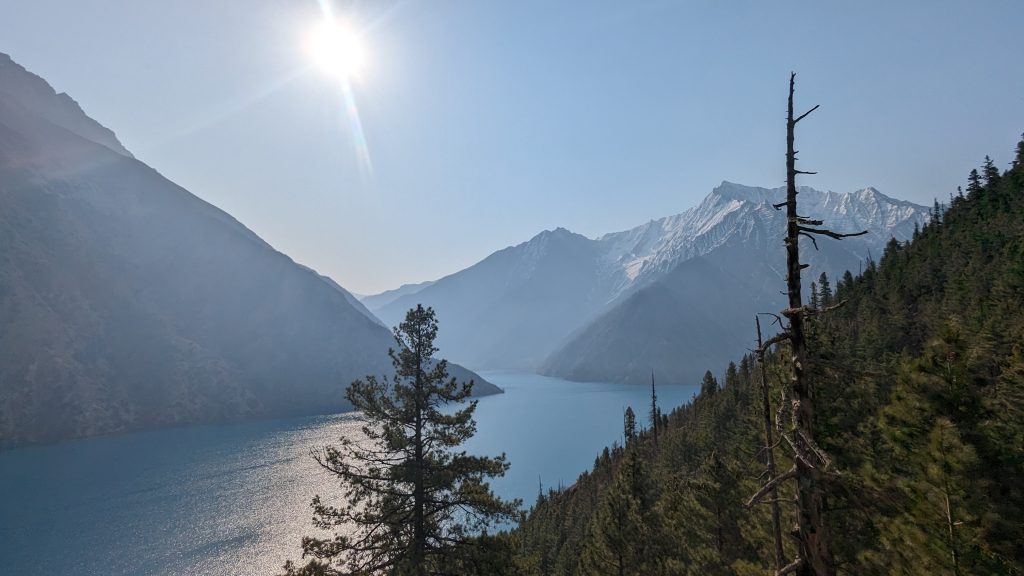
High Mountain Passes: Jyanta La, Shey La and Kang La
The trek features challenging yet rewarding high mountain passes:
- Jyanta La Pass (5,050 meters / 16,568 feet): This pass offers breathtaking views of the surrounding peaks and valleys. The ascent is strenuous, but the panoramic views from the top are worth the effort.
- Shey La Pass (5112 meters / 16804 feet): One of the most beautiful vantage points of the whole trek. The ascent and descent are fairly easier in comparison to other two passes.
- Kang La Pass (5,346 meters / 17,539 feet): The highest and most challenging pass on the trek. The climb is steep and demanding, with snow and strong winds making the ascent even tougher. However, the reward is a stunning view of the snow-covered peaks and valleys below.
Saldang: Cultural Hub of Dolpo
Saldang, located at 3,850 meters (12,631 feet), is a major cultural and administrative center in Dolpo. It is one of the oldest and most significant settlements in the region. The village serves as a gateway to the high mountain passes and offers a chance to experience traditional Dolpo culture. The vibrant local life, ancient monasteries, and cultural practices provide an enriching experience.
Ringmo Village: Gateway to Phoksundo Lake
Ringmo, at 3,610 meters (11,847 feet), is a charming village near Phoksundo Lake. The village offers stunning views of the lake and the surrounding landscapes. Ringmo is a great place to relax and explore the pristine environment of Phoksundo Lake. The village’s scenic beauty and the lake’s serene waters make it a perfect spot for unwinding after the trek.
Acclimatization is Key for Upper Dolpo Trek
The Upper Dolpo Trek involves crossing several high-altitude passes, including the Shey La Pass at 5,115 meters and the Kang La Pass at 5,346 meters. To avoid altitude sickness and ensure a safe trek, acclimatization is crucial.
- Gradual Ascent: Follow the trek’s itinerary closely to allow your body time to adjust to the changing altitudes. Take rest days as planned, particularly at high-altitude locations like Dho Tarap and Saldang.
- Hydration and Nutrition: Stay well-hydrated and consume high-energy foods. Avoid alcohol and reduce caffeine intake, as they can exacerbate altitude sickness.
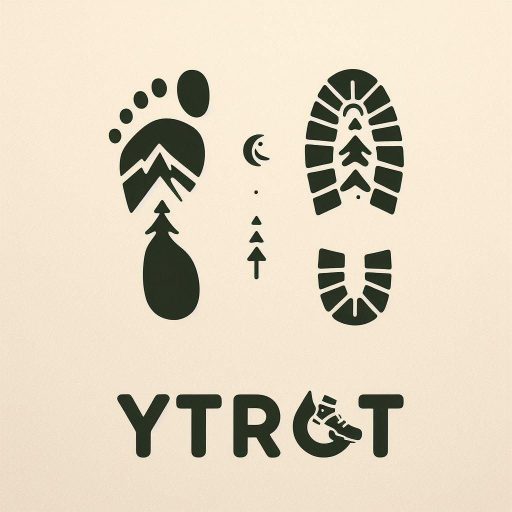
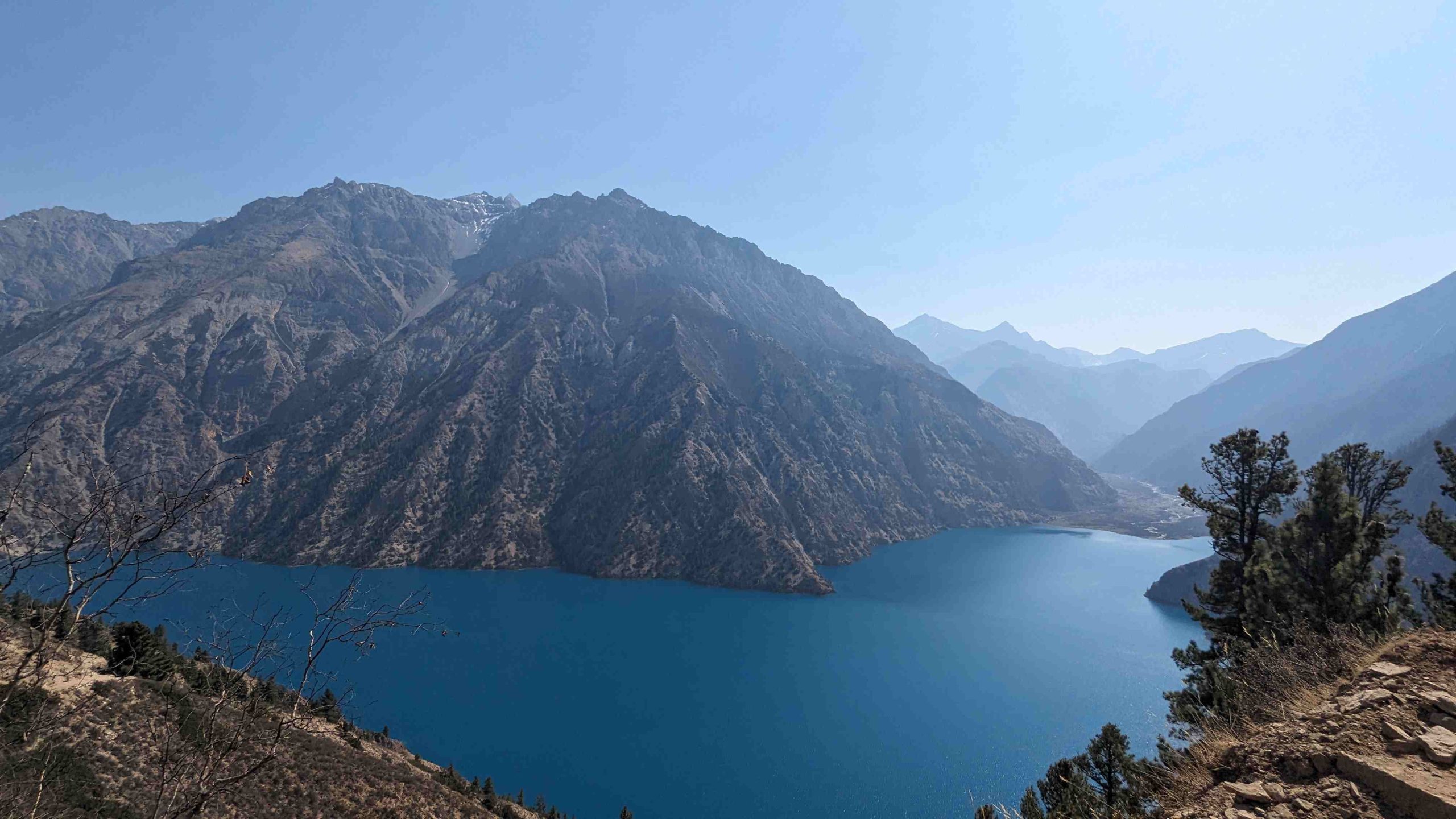
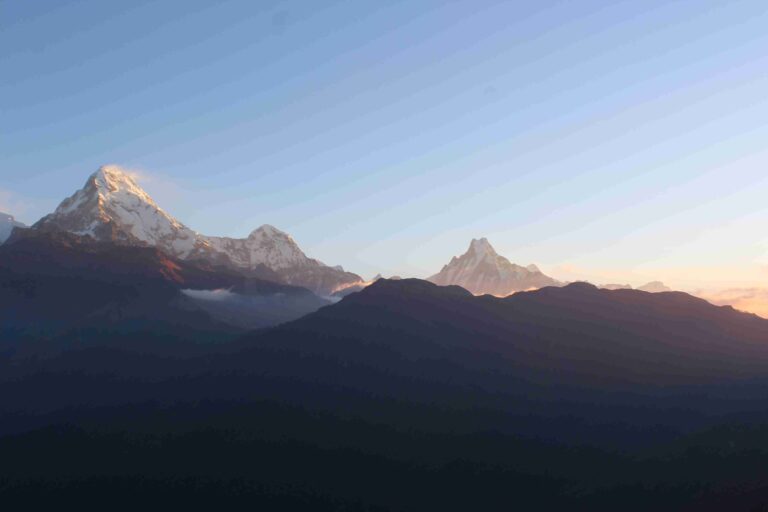
Amazing!🤩